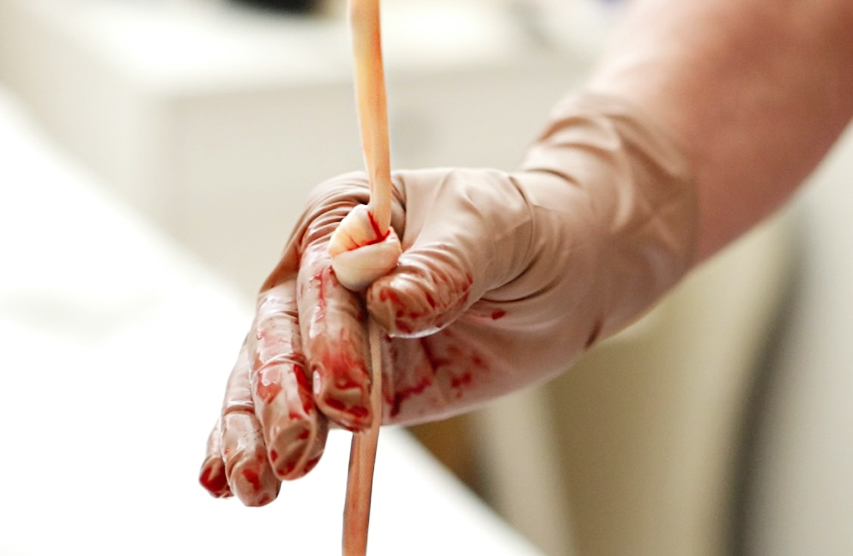An umbilical cord knot is exactly what the term sounds like — a knot in the baby’s umbilical cord. Some knots form during pregnancy as baby flips and turns in their amniotic sac; other knots form during delivery.
What is an umbilical cord?
The umbilical cord is the vital connection between the fetus and the placenta. Umbilical cord development begins around week 3 with the formation of the connecting stalk (pre-umbilical cord where embryo is connected to what will become the fetal portion of the placenta). By week 7, the umbilical cord has fully formed.
By the end of the first trimester, the umbilical cord is comprised of are two arteries and a vein. It is surrounded by a j gelatinous substance call Wharton’s Jelly. The umbilical vein carries oxygenated blood with nutrients from the placenta to the fetus and the umbilical arteries transporting deoxygenated blood with waste products from the fetus to the placenta.
What does Wharton’s Jelly do?
A thick, gelatinous substance made primarily of collagen, its main job is to provide cushioning and protection for the umbilical cord’s three blood vessels by preventing the cord from becoming compressed or bent. Wharton’s jelly also supports the umbilical vessels’ ability to deliver oxygen, blood sugar, and amino acids to a developing fetus. [Miraclecord News]
What’s does this have to do with an umbilical cord knot?
Occasionally the cord can knot and happens naturally as baby moves around. It can also happen during delivery as baby twists and turns towards the exit. Usually not posing a threat, these knots often unknot on their own. Wharton’s jelly prevents small knots from getting tight.
Sometimes; however, the knot gets very tight, and healthcare providers call this a true knot. Unlike a small knot that loosens easily, a true knot is so tight that it can block oxygen and nutrients from reaching the fetus. It can cause complications during pregnancy and delivery because it deprives the fetus of vital nutrients and oxygen. These true knots comprise less than 1% of all pregnancies.
How to know if I have a true knot?
Its important to monitor movement especially in the last trimester. If baby is moving significantly less, then this is something you want to bring up to you midwife or OB. True knots can be diagnosed through ultrasound. Since you can’t unknot the knot, your health care provider will monitor you and baby much closer and more often. An elective cesarean plan may be brought up if baby is in increasing distress. Labor can also tighten a true knot and can become an emergency if baby is in distress.

Are there risk factors for umbilical knots?
These true knots are rare. Small knots, like the one above, is rarely a cause for concern. The concern comes in when they become tight, potentially cutting off oxygen to the baby. According to the Cleveland Clinic, these are some risk factors:
- The fetus is small for its gestational age.
- The umbilical cord is very long.
- You’re carrying monoamniotic twins (identical twins that share an amniotic sac).
- You have too much amniotic fluid (polyhydramnios).
- You’ve had two or more pregnancies (multiparity).
- You’re older than 35.
To sum up
Know you body and your baby. Heading into the third trimester, if movement of baby has reduced, inform your healthcare provider. Most knots are nothing to be too concerned about and change with baby’s movement. Wharton’s Jelly keeps the cord well lubricated so the knot doesn’t become tight. Enjoy your pregnancy, there will be plenty of skinned knees to worry about later.